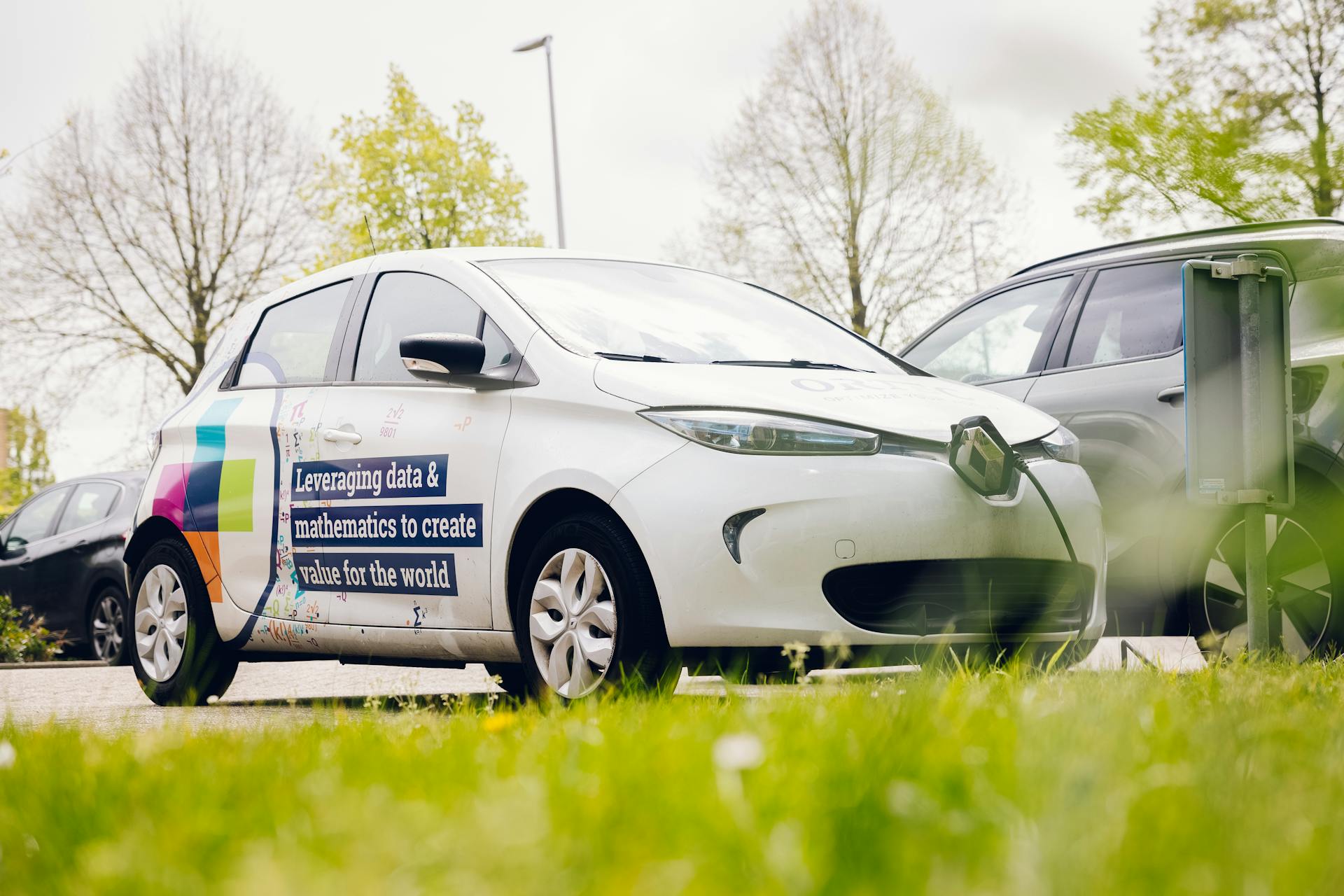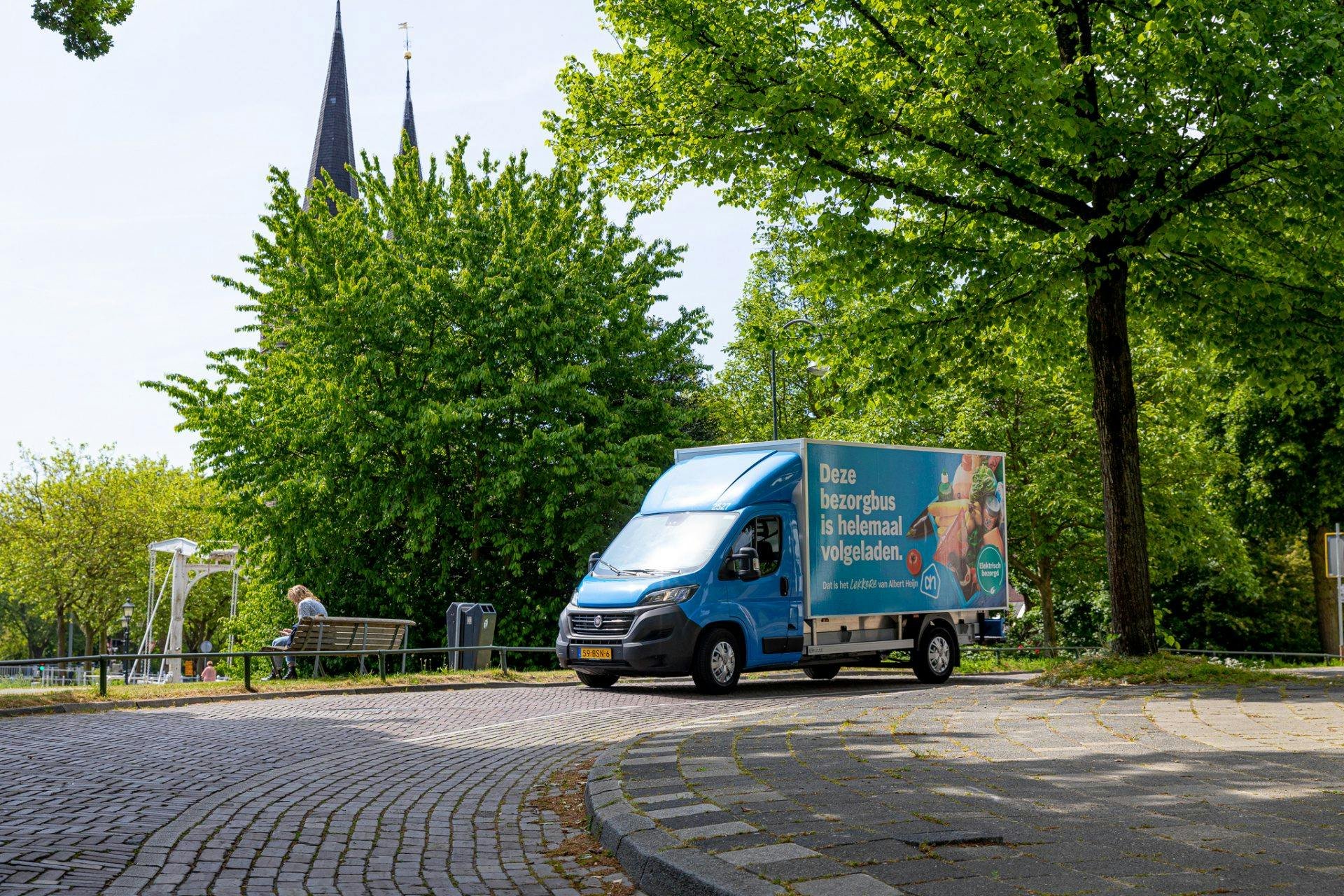Why E-Mobility Requires a Rethink in Logistics Strategy
Electrification in logistics isn’t just about keeping up with regulations or chasing green credentials. It’s about solving complex operational puzzles that come with electrification—puzzles that demand precision, foresight, and innovation. Erica and Lorenzo’s perspectives shape this exploration of E-Mobility, from the forces driving its rise to the practical solutions ORTEC is crafting to make it work.
Regulatory and Economic Forces Driving EV Adoption
Several forces are accelerating the adoption of electric vehicles across industries. Regulatory mandates, corporate sustainability reporting, and economic incentives are are pushing more companies to begin or expand fleet electrification.

Low-emission zones in urban centers, such as those in European cities, increasingly restrict or ban diesel vehicles, forcing fleets to electrify to maintain access.
Companies face growing obligations to disclose and reduce carbon emissions, with EVs playing a central role in meeting these targets.
Governments and markets are shifting the financial calculus in favor of EVs through subsidies, tax breaks, and penalties for high-emission fleets.
Beyond regulations and economics, public expectations are accelerating the shift. Consumers increasingly demand low-emission delivery options, particularly in sectors such as e-grocery, where sustainability perceptions strongly influence purchasing decisions.
Fossil fuels, Regulations and Economic Shifts
Looking back, Erica recalls how the E-Mobility conversation has evolved. “At first, it was all about moving away from fossil fuels,” she explains. “But now, it’s clear that electrification isn’t just about changing the engine—it’s about redesigning systems, from how energy is sourced to how operations are planned.” Electricity stands out as the only realistic alternative to traditional fuels, whether powering EVs directly or supporting hydrogen as an energy carrier. Yet, the journey to get there is anything but simple.
What’s fueling this urgency? Lorenzo points to a mix of hard regulations and economic shifts. “In cities, low-emission zones are banning diesel trucks outright, forcing companies to adopt EVs to keep operating,” he says. Beyond that, sustainability reporting requirements are nudging businesses to track and shrink their carbon footprints, with electric fleets often being the most visible step. Add in financial incentives—like tax breaks or penalties for sticking with fossil fuels—and the case for electrification grows stronger every day.
But it’s not a one-size-fits-all story. Lorenzo describes how companies approach this shift differently. “Some are all-in, electrifying entire fleets as fast as they can. Others are dipping their toes in, testing a few EVs to learn or boost their image. Then there are the skeptics, holding off and hoping the rules soften.” This diversity plays out globally—Norway might lead the charge, but places like the US and Australia are seeing EV growth in last-mile delivery, each market shaped by its own rules and needs.
"If you analyze your fleet and routes upfront, you can figure out where electrification pays off fastest - both for your wallet and the planet.”
Practical obstacles to transitioning
For all the momentum behind E-Mobility, Lorenzo knows the day-to-day realities can slow things down. “Fleet managers aren’t losing sleep over compliance deadlines yet,” he says. “They’re wrestling with practical stuff—charging stations and range worries.” Take depots, for example. Many were built for diesel operations, with power grids sized for basic needs—maybe 50 to 100 kW. “Now, if you want fast chargers pulling 300 kW or more, you’re looking at grid upgrades that could take years,” Lorenzo explains. That’s a bottleneck no one planned for.
Then there’s range anxiety. Lorenzo: “Say a truck’s range is 200 kilometers on a good day. Planners might cap it at 150 kilometers, just to be safe—factoring in cold weather or traffic jams. That caution means EVs sit idle when they could be in use more efficiently.” Without solid data on how much energy a trip really takes, decisions get conservative, or worse, guesswork takes over. “We’ve seen managers scrambling mid-route because a battery ran dry unexpectedly,” he adds. “That’s the kind of chaos we’re trying to eliminate.”
On the investment side, Lorenzo sees companies stumbling too. “Some go big, electrifying a whole depot without checking which routes make sense for EVs. Others play it too safe, rolling out a couple of trucks more for PR than profit,” he says. The missing piece? A clear, data-driven plan. “If you analyze your fleet and routes upfront, you can figure out where electrification pays off fastest - both for your wallet and the planet.”
Operational Challenges of E-Mobility
While regulatory and economic drivers push companies toward electrification, operational hurdles often dominate early adoption.
1. Charging Infrastructure Limitations
Many depots lack the grid capacity to support fast chargers (300 kW and above), as their electrical infrastructure was designed for warehouse or office use (50–100 kW). Upgrading grid connections can involve wait lists of 2–3 years in some regions, creating obstacles for fleet electrification. Additionally, the availability of public charging stations remains inconsistent, complicating on-route charging strategies.
2. Range Anxiety and Conservative Planning
Range anxiety—the fear that an EV will run out of charge mid-route—leads planners to adopt conservative assumptions. For example, a vehicle with a 200 km range under optimal conditions might be limited to 150 km trips to account for variables like weather, load, or traffic. This caution reduces fleet efficiency and restricts EVs to shorter routes, even when longer trips are feasible. Lorenzo notes, “Without clear visibility into battery levels at each stop, planners make overly safe or even random vehicle assignments, requiring costly manual interventions later.”
What's your optimal fleet mix?
The transition to electric vehicles (EVs) involves more than just replacing assets. It requires a strategic approach to routing, charging infrastructure, and energy sourcing. Defining the optimal fleet mix means balancing sustainability goals with operational realities. Some key considerations include:
- How do regulations (like the CSRD) influence my fleet decisions?
- Which clients can I visit with an EV?
- What type and number of chargers are needed at depots?
- Is the existing grid connection sufficient to support charging infrastructure?
- How will energy be sourced?

“Companies are under pressure to report their carbon footprints, and EVs are often the quickest way to show progress.”
The essential role of data
Lorenzo sees a powerful mix of forces pushing companies toward EVs, and it’s not just about ideals—it’s about survival. In cities across Europe, low-emission zones are shutting diesel trucks out, leaving fleets no choice but to electrify if they want to keep delivering. “It’s not just regulations,” Lorenzo explains. “Companies are under pressure to report their carbon footprints, and EVs are often the quickest way to show progress.” Then there’s the money side: tax breaks and subsidies make EVs tempting, while penalties for sticking with fossil fuels hit harder every year. “It’s a carrot-and-stick game,” he says, “and the stick’s getting heavier.”
But the road to electrification is bumpy, and Lorenzo knows the real headaches aren’t in the boardroom—they’re in the depots. Upgrading power grids, assessing the range of EVs, electrifying fleets inefficiently – it all adds up. The fix, Lorenzo argues, lies in data—crunching numbers to pinpoint where EVs make sense, both for profits and the planet.

Lorenzo Simons
"Our predictions are spot-on, giving clients a plan that works for next Wednesday, not just a dream for 2030."
Solutions using a three-part strategy
To tackle these hurdles, ORTEC’s innovation team is building solutions around a three-part strategy: understanding energy needs, planning charging, and optimizing every move. “First, we focus on predicting how much energy a truck will use on a route. It’s not just distance,” Lorenzo says. “We look at elevation, weather, load, even how the driver handles the wheel.” ORTEC’s machine learning models churn through this data, forecasting battery levels stop by stop. “A planner can see a truck hitting a delivery with 53% charge, or 45% if it’s freezing,” he explains. That precision cuts out guesswork and keeps trucks rolling.
Next comes charging, a puzzle of its own. Lorenzo describes the challenge of scheduling chargers at depots, balancing fast and slow options while dodging grid limits and spiking energy costs. ORTEC is prototyping tools to automate this, ensuring trucks are juiced up and ready without overloading the system. “It’s about syncing charging with operations,” he says, “so you’re not stuck waiting for a plug.”
The final piece is what Lorenzo calls the big picture: pulling it all together into one daily plan. This means matching trucks to routes based on their charge, slotting in charging stops, and adjusting for real-time snags like traffic or weather. “Diesel routing was simple. With EVs, everything’s connected—chargers, grid, weather, you name it. One change ripples through the plan.” ORTEC’s models shine here, especially for short-term plans. “Two days out, we’ve got solid data—weather, orders, traffic,” Lorenzo says. “Our predictions are spot-on, giving clients a plan that works for next Wednesday, not just a dream for 2030.”
Three-Pillar Framework for E-Mobility
➡️ Pillar 1: Energy Consumption Estimation
Accurate energy consumption predictions are the foundation of effective EV fleet management. “Before you can plan anything, you need to know how much energy a vehicle will consume on a given route,” Erica explains. ORTEC’s machine learning models estimate consumption by analyzing variables such as:
• Route characteristics (distance, elevation, stops)
• Environmental conditions (temperature, wind)
• Vehicle load and weight
• Driving behavior and speed profiles
These models provide stop-by-stop forecasts of the state of charge (SOC), enabling planners to assign vehicles with confidence and reduce range anxiety. For example, a planner can know that a vehicle will arrive at a stop with 53% battery under current conditions, or 45% if temperatures drop.
➡️ Pillar 2: Energy Supply Planning
The second pillar focuses on ensuring vehicles are sufficiently charged to complete their routes. This involves:
• Optimizing charging schedules at depots, balancing fast and slow chargers
• Identifying on-route charging opportunities
• Aligning charging with grid capacity and energy price fluctuations
• Planning charger availability at depots and public stations
ORTEC is prototyping tools to automate these schedules, ensuring all vehicles are charged and ready for departure without overloading depot infrastructure.
➡️ Pillar 3: Full-Day Optimization
The third pillar integrates routing, charging, and vehicle assignment into a single, optimized daily plan. This holistic approach considers all variables—energy consumption, battery levels, charger availability, grid constraints, and operational time windows—to create a feasible schedule for the entire fleet. “It’s not just about routing anymore,” Erica says. “It’s about orchestrating every aspect of vehicle activity in a unified plan.”

Erica D'Acunto
"It’s about designing a system that’s ready for the future - one route, one charge, one plan at a time."
Working models for today’s challenges
These tools (propelled by AI and machine learning) are already making a difference. ORTEC’s energy prediction models, for instance, are live and humming. They let planners see exactly how much battery a route will burn and assign trucks accordingly. Lorenzo: “No more mid-route surprises, and companies can even simulate past routes to figure out where EVs fit best.” Charging schedule prototypes are taking shape too, streamlining depot operations. But Lorenzo’s sights are set higher—on what he calls “the holy grail”: a system that plans routes, assigns trucks, slots charging, and adapts on the fly, all at once. “It’s a math nightmare, but we’re cracking it, bit by bit.”
For Erica, it’s about progress, not perfection. “We’re not waiting for the ultimate solution,” she says. “We’re giving clients tools that solve today’s problems—like range worries—while building toward that bigger vision.” Every trip tracked sharpens their models, creating a feedback loop that gets smarter with time. The challenges of E-Mobility are daunting, but Erica sees them as a chance to rethink logistics from the ground up. “It’s not just about electric trucks,” Erica says. “It’s about designing a system that’s ready for the future - one route, one charge, one plan at a time.”
About Erica D'Acunto
Erica D'Acunto | VP Innovation at ORTEC
Throughout her career, Erica D’Acunto has been driven by a curious mindset and commitment to broad learning. Thanks to her academic background in Software Engineering from Italy and an MBA from the University of Amsterdam, she can effectively bring together business and technology. As VP Innovation at ORTEC, she firmly advocates that successful innovation stems from addressing vital customer needs with impactful, people-centric solutions, a principle that underpins her approach to driving meaningful, customer-focused innovations.

About Lorenzo Simons
Lorenzo Simons | Subject Matter Expert on E-Mobility at ORTEC
As the Subject Matter Expert on E-Mobility, Lorenzo Simons plays a crucial role in providing in-depth knowledge and expertise in the specific field of electric vehicles and the broader ecosystem of electric mobility. With his background in Electric Power Markets and Operation Research, he combines technical expertise, regulatory knowledge, and market insights to contribute to the development, implementation, and growth of electric mobility solutions. His role is critical for the successful integration of electric vehicles into the transportation system and the sustainable development goals.





